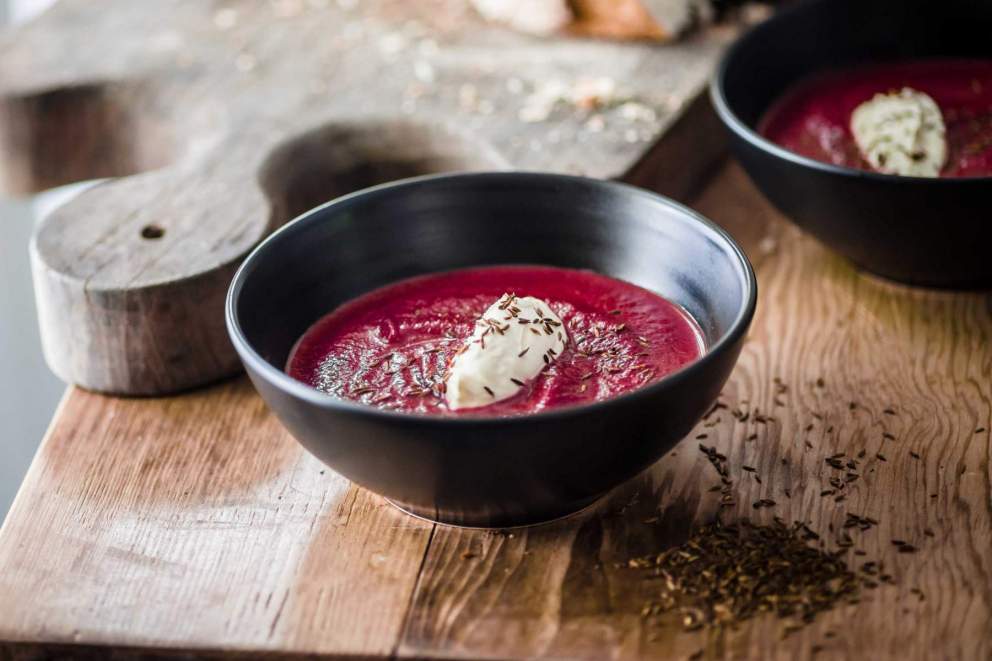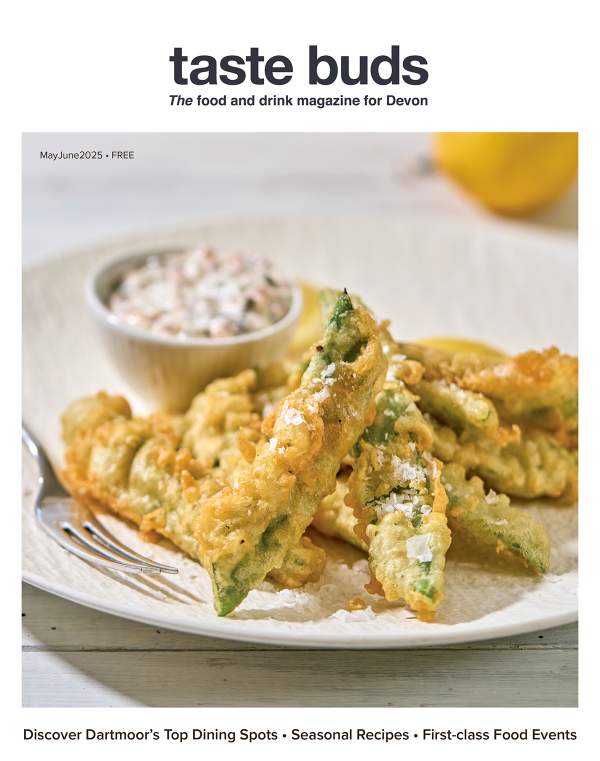Freshly harvested vegetables are the unsung heroes of the winter dinner table. Clare Hunt finds out why local chefs value them so highly

With Christmas indulgences over and the worst of winter yet to come, we need comfort food to get us through the start of the year. The diet industry may be pointing out your waistline and screaming ‘new year, new you’ but short grey days, biting cold and long dark nights call for robust, warming meals to nourish us, not protein shakes and undressed leaves. So, to satisfy our comfort cravings with something delicious but healthy and nutritious too, where do we turn? To vegetables, of course.
With British diets traditionally meat-heavy, Matthew Mason, Head Chef of The Jack in the Green restaurant in Rockbeare, observes, “It’s so easy to overlook vegetables as an integral addition to any meal – often the bridesmaid and never the bride.” Given their versatility, diversity and flavour and abundant health benefits, that’s a bit bonkers. Low in calories, full of vitamins and minerals (including A and C, iron and folate to boost the immune system and fend off colds), veg offer a great source of fibre (to rebuff sugary cravings that come with Seasonal Affective Disorder). A veg-rich diet contributes to weight control, boosts energy levels and is credited with reducing susceptibility to strokes, heart disease, cancer and type-2 diabetes. James Dodd, Head Chef at Riverford Field Kitchen near Buckfastleigh, says, “We wouldn’t feed animals chocolate bars and chips – we feed them vegetables as that’s what they need to survive, but we fail to return the favour to ourselves.”
Perhaps unexpectedly, the depth of winter offers an abundance of local vegetables, with iron-rich greens and diverse roots dominating. James Dodd says, “The ground will be frosty, so hardy roots will be on the menu. Things such as beetroot, celeriac, Jerusalem artichokes, parsnips and my favourite, swede, will be in the fields and we’ll still be pulling sprouts in by the crate, along with kale.” Roots thrive in the cold, with frost helping to turn starch to sugar and contributing to delicious sweet flavours. Josh McDonald-Johnson, who runs Honiton-based caterers Pickle Shack, says, “I champion the quirky heritage varieties. Purple carrots and stripy beetroot bring fun and maximum flavour to your plate and support smaller, independent suppliers who are keeping these traditional varieties alive.”
Local veg box schemes are an excellent way to get the best of what’s seasonal, often containing interesting, unexpected varieties you’d be unlikely to find in the supermarket. Even the experts are pleasantly surprised, with Matthew Mason observing: “I’ve taken to a veg box scheme and this has inspired me to consider the role of the humble vegetable once more… We’ve enjoyed some great soups of late, hopefully down to my culinary expertise but more likely down to the ingredients in our veg boxes.”
The seasonal vegetables from Devon’s fields in January and February lend themselves to simple cooking (steaming, roasting, stir frying) and work brilliantly in hearty stews and bakes. James Dodd says, “Simple is always key: you don’t want to complicate things or cover up flavours.” Laura Mounce, Manager at Lifton Farm Shop, agrees, saying, “We simply steam our veg and all vegetables are great in soups. We make many exciting soups, including kale – try it, it’s delicious!”
While you may have to retrain your brain a little to promote vegetables to the starring role on your dinner plate, it’s an undeniable win-win: comfort and nutrition for both body and soul.
Forget the vinegary specimens your granny used to put in salads – a beetroot revolution’s under way, with cylindrical as well as round varieties cropping up in white, yellow, pink and deepest purple, with or without stripes. Bringing colour, flavour and versatility to your plate, from raw and crunchy to roasted and caramelised, beetroot is also credited with lowering blood pressure.
Crinkly Savoy or purple-tinged January king bring crunchy sweetness as well as colour to the winter table. The backbone of slaws, soups and salads, cabbage can also be griddled or roasted and served as an unusual starter with a tangy, spicy dressing. Rarely taking centre-stage, it can be enjoyed oozing with cheese in a gratin, stuffed with mushrooms or in a Keralan Thoran – a dry stir-fried curry with coconut.
Cauli cheese could well be the ultimate-comfort-food crown, but the versatility of the vegetable also sees it working well in everything from soups to salads and featuring widely in Indian cuisine. While white-curded varieties are most familiar, cauliflower also comes in vivid purple, lime green and golden hues. The other-worldly geometric spirals of Romanesco can’t fail to inject the exotic into a winter meal.
With celebs slurping lurid green smoothies, kale went from cattle-food to super-food seemingly overnight. Packed with health-giving properties, it can be curly or smooth-leaved, spiky or variegated. Versatile accompaniment as well as main-course mainstay, kale can be eaten shredded and raw, boiled, steamed, stir fried, pureed or roasted, made into pesto or spiced crisps. Impressive. Matthew Mason is a keen advocate of “the most sensational varieties of variegated kale – a real eye-catching product with great flavour and so versatile“.
Even if you’re a sprout lover, over-indulgence at Christmas may have put you off. But fear not, currently enjoying their moment in the veg-fashion limelight, the cluster of leaves that grow at the top of the sprout plant’s stem have a gentler flavour and none of the dense texture some find unpalatable. Cook quickly and simply to retain bright greenness and a bit of bite.
Under-rated and slightly off-puttingly knobbly, Jerusalem artichokes are earthy and sweet with a flavour unlike anything else. Unexpectedly a member of the sunflower family, they confusingly have nothing to do with globe artichokes. Happiest as a support act to rich meat dishes, Jerusalem artichokes also make excellent soup or crispy, salty oven-roasted chips. James Dodd recommends them simply roasted with rosemary and lots of butter.
Six times a year, delivered to your door
Annual subscription: £18
Single Issue: £4
MayJune 2025 issue out now
Try before you buy. View digital edition
Go to Shop